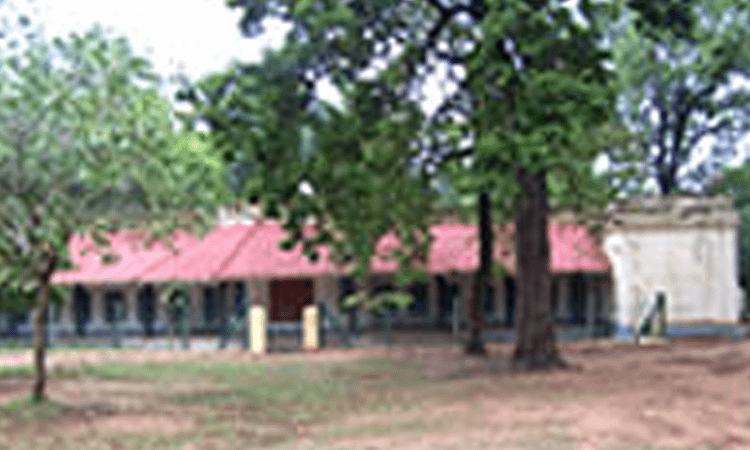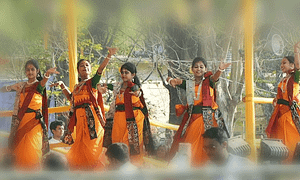Santiniketan, located in Bolpur, Birbhum district of West Bengal, is home to a unique collection of historical houses tied to the legacy of Rabindranath Tagore. These houses, spread across the Visva-Bharati University campus and nearby areas, are more than just buildings—they reflect Tagore’s vision of simplicity, education, and harmony with nature. Recognised as part of Santiniketan’s UNESCO World Heritage Site status (granted in September 2023), these structures offer a peek into the life of India’s first Nobel Laureate and the early days of his ashram. From mud huts to family homes, explore the historical houses that make Bolpur Santiniketan a heritage treasure.
The Legacy Behind Santiniketan’s Historical Houses
The journey of Santiniketan’s historical houses began in 1863 when Maharshi Debendranath Tagore, Rabindranath’s father, set up an ashram on land then called Bhubandanga. Under two chhatim trees, he built a guest house that became the seed of Santiniketan, meaning “abode of peace.” In 1901, Rabindranath Tagore started a school here, which grew into Visva-Bharati University by 1921. Over time, he and his associates built several houses, each with a purpose—some for living, others for teaching or writing. These houses mix Indian, Japanese, and Persian styles, using local materials like mud and bamboo, showing Tagore’s love for nature and creativity.
These historical houses played a big role in Santiniketan’s story. They welcomed leaders like Mahatma Gandhi, housed students and teachers, and inspired Tagore’s works. Today, they stand as a key part of Santiniketan’s heritage, drawing visitors to Bolpur who want to feel the history of this peaceful town.
Famous Historical Houses at Visva-Bharati Campus and Beyond
Here’s a list of Santiniketan’s historical houses, each with a short story:
- Shyamali: A mud house built by Tagore as an eco-friendly experiment, with earthen walls and a thatched roof. Mahatma Gandhi stayed here in 1940.
- Konark: A simple single-storey house where Tagore found peace for his work. Its name, meaning “sun temple,” reflects its bright vibe.
- Udichi: A small two-storey house with artistic design, used by Tagore as a personal retreat. “Udichi” means “northern,” adding a poetic touch.
- Udayan: The largest of Tagore’s homes, where he spent his final years. It was a busy spot for meetings and creative tasks.
- Punascha: A one-room house built around 1938, perfect for Tagore’s quiet writing sessions. Its name, “postscript,” suggests it was a late addition.
- Santoshalaya: Named after Santosh Majumder, an early associate of Tagore, this house south of Shalbithi is now a girls’ hostel with artistic frescoes.
- Singha Sadan: Built with a donation from the Sinha family of Raipur, this house has a clock tower and bell that once guided ashram routines. It marks Tagore’s Oxford doctorate honour.
- Gairik: A lesser-known house near the ashram, once home to teachers or students. Its name, meaning “red ochre,” ties to Santiniketan’s red soil.
- Sanskarbhawan: Near Ashram Pukur, this low-cost house was for students and workers. Known as “Garden House” for its student-made garden, it broke caste barriers.
- Dwarik Bithika: Built in memory of Satish Chandra Roy, this house between Shalbithi and Santoshalaya was where the first handmade paper, “Bithika,” was made.
- Deholi: A two-storey house where Tagore lived with his wife, Mrinalini Devi, until her death in 1902. It’s now part of a school, Mrinalini Ananda Pathsala.
- Notun-Bari (New House): Built in 1902-03 for Tagore’s family after Mrinalini’s death, it later housed Gandhi’s Phoenix school students and became a library.
- Prak-kuthir: A simple house near the ashram, likely used by early residents or staff. Its name suggests a pre-existing or natural cottage.
- Satish Kuthir: Named after Satish Chandra Roy, a loyal colleague of Tagore, this house reflects the community spirit of Santiniketan’s early days.
- Satya Kuthir: A modest cottage linked to the ashram’s history, possibly used by students or teachers. Its name, “truth,” echoes Tagore’s values.
- Gour Prangan: Not a house but an open ground near Patha Bhavan, named after Gour Gopal Ghosh. It hosts ceremonies like flag-hoisting on national days.
- Patha Bhavan Office (Old Library): Once the central library at the ashram’s edge, this house is now the office of Patha Bhavan, the school Tagore founded.
Why These Houses Are Special
The historical houses of Santiniketan stand out for their simplicity and purpose. Tagore designed many with mud and bamboo, keeping them close to nature. They mix styles from India, Japan, and Persia, showing his global vision. Some, like Udayan, were lively hubs, while others, like Punascha, offered quiet corners for writing. They hosted famous guests, nurtured students, and inspired works like Gitanjali. As part of Santiniketan’s UNESCO heritage, they preserve a legacy of creativity and community that’s rare today.
Surrounded by Santiniketan’s red soil and greenery, these houses feel alive with history. They’re not just old structures—they tell the story of Tagore’s dream for a better way of living and learning in Bolpur Santiniketan.
Visiting the Historical Houses
To see these historical houses, visit the Visva-Bharati campus in Santiniketan, just 3 km from Bolpur railway station. Take the Shantiniketan Express from Kolkata (152 km, 3-4 hours) or drive via NH 19 from Kolkata or Durgapur. The best time is October to March, when the weather is cool, and events like Poush Mela bring the place to life. Most houses are in the Uttarayan complex, accessible with a small fee at Rabindra Bhavan museum. Local rickshaws or walking tours work best—wear comfy shoes and enjoy the calm heritage vibes of Bolpur Santiniketan.
The historical houses of Santiniketan are a bridge to Rabindranath Tagore’s world. They invite you to explore a heritage that’s simple, meaningful, and timeless.
Note: This is not the official page of Santiniketan or Visva-Bharati. The information provided here may not be entirely accurate or up-to-date. If we receive further information, we will definitely update this page accordingly.














